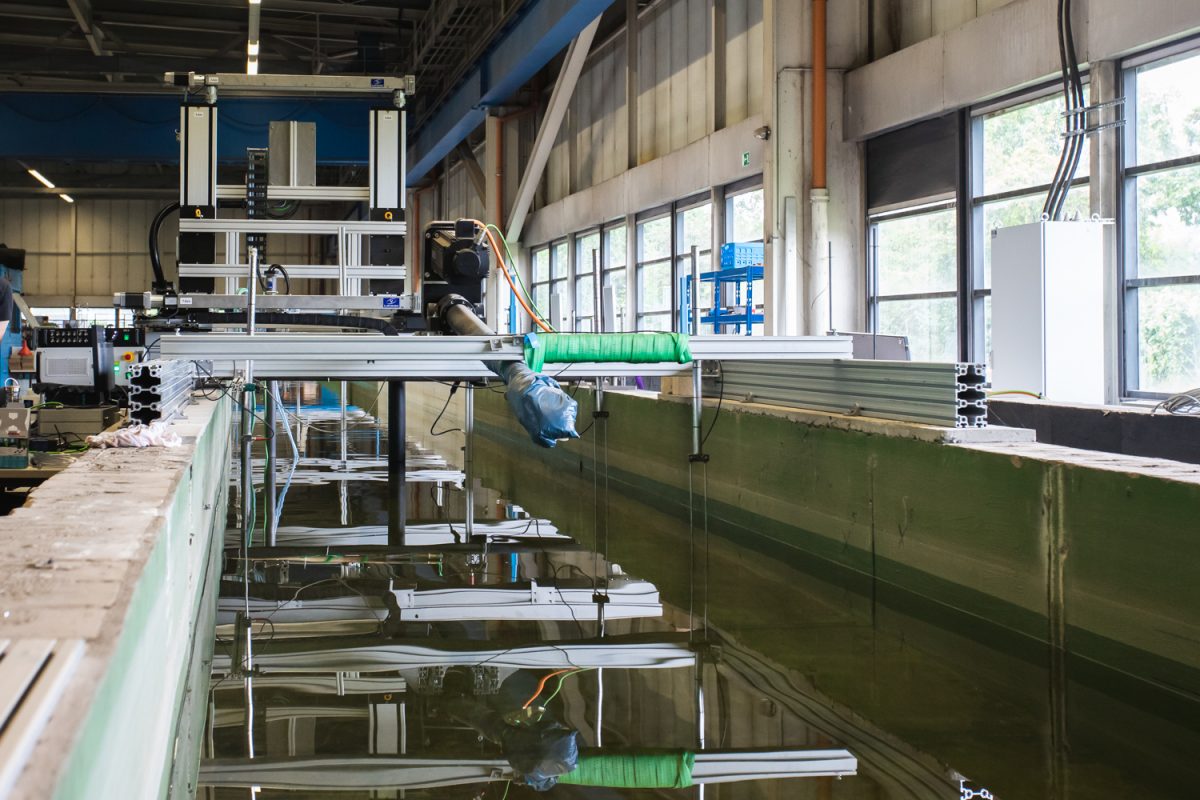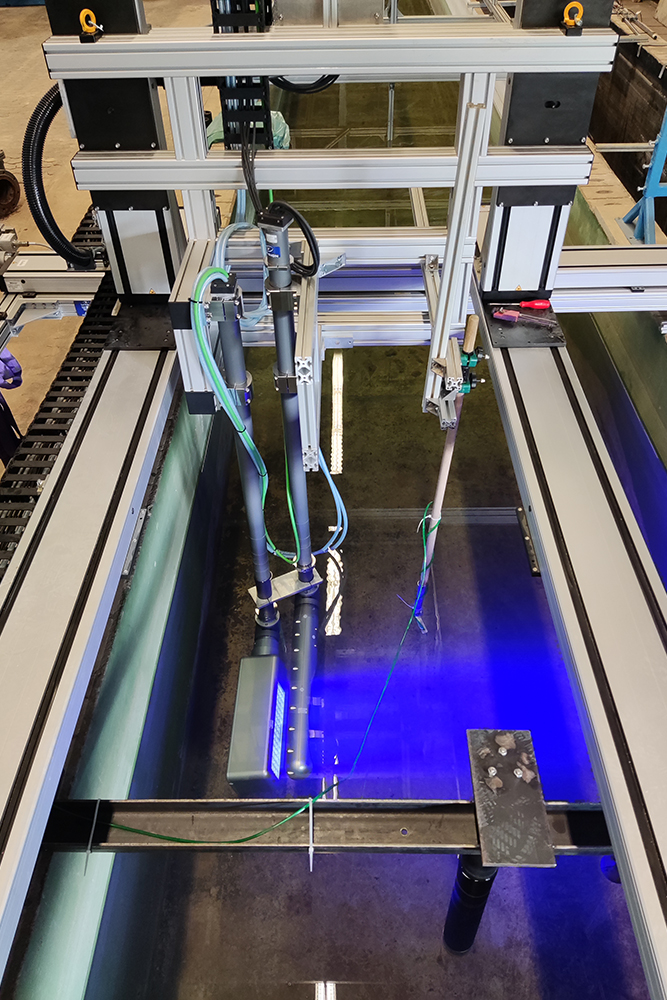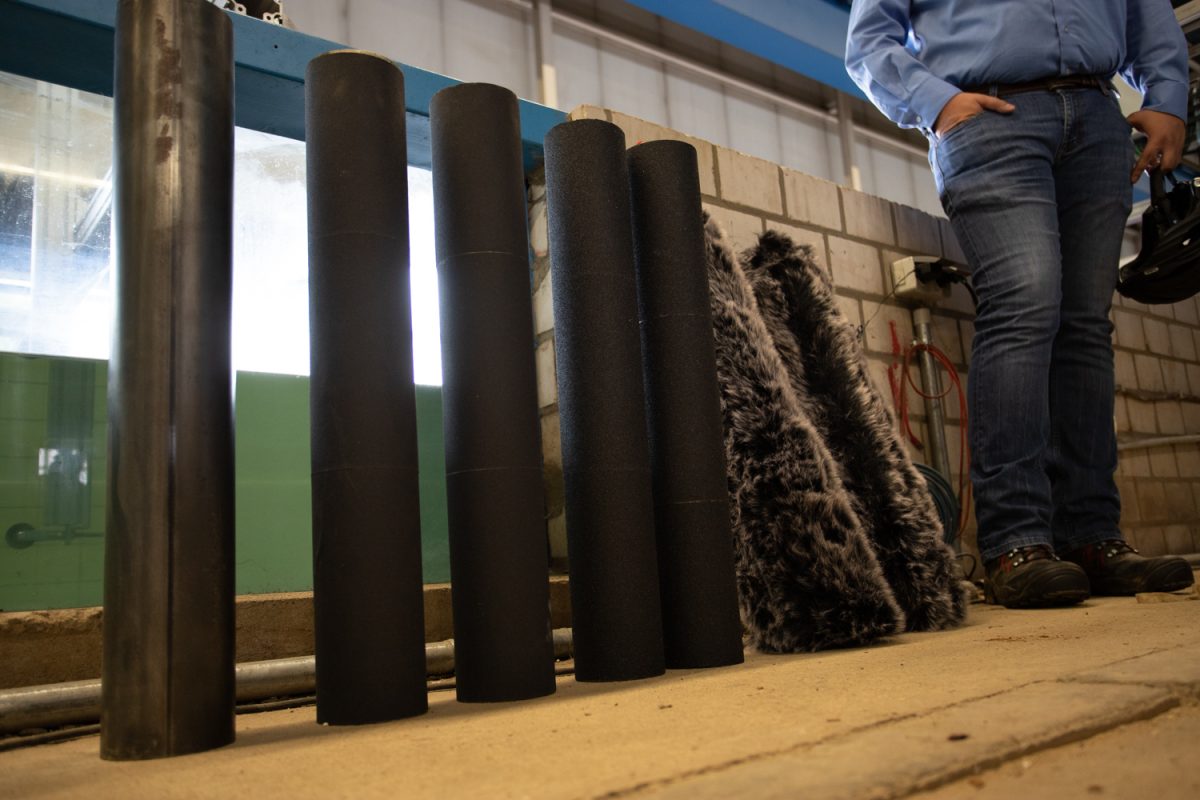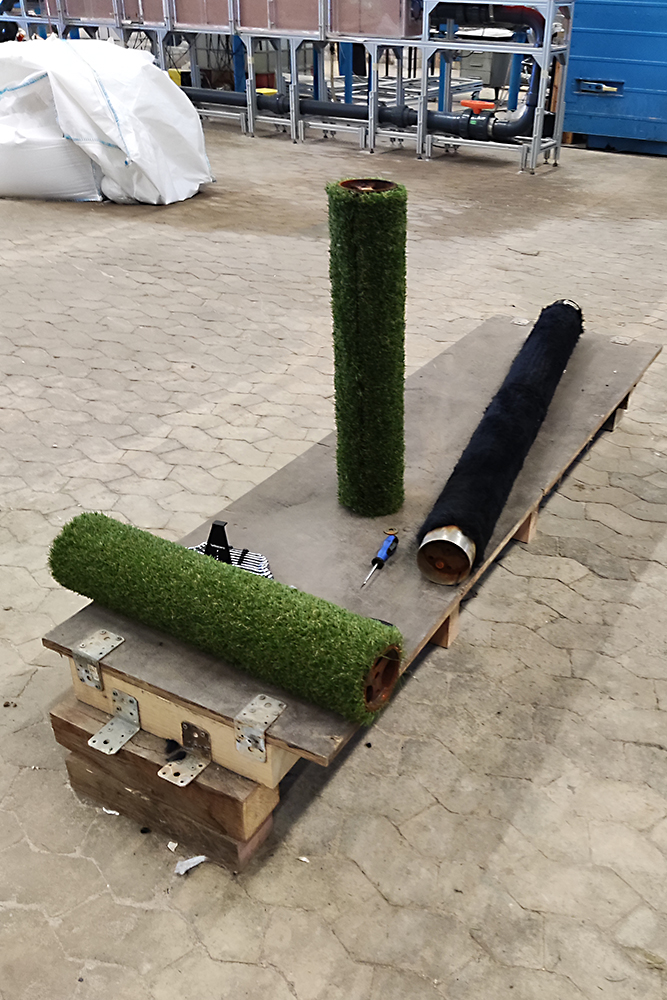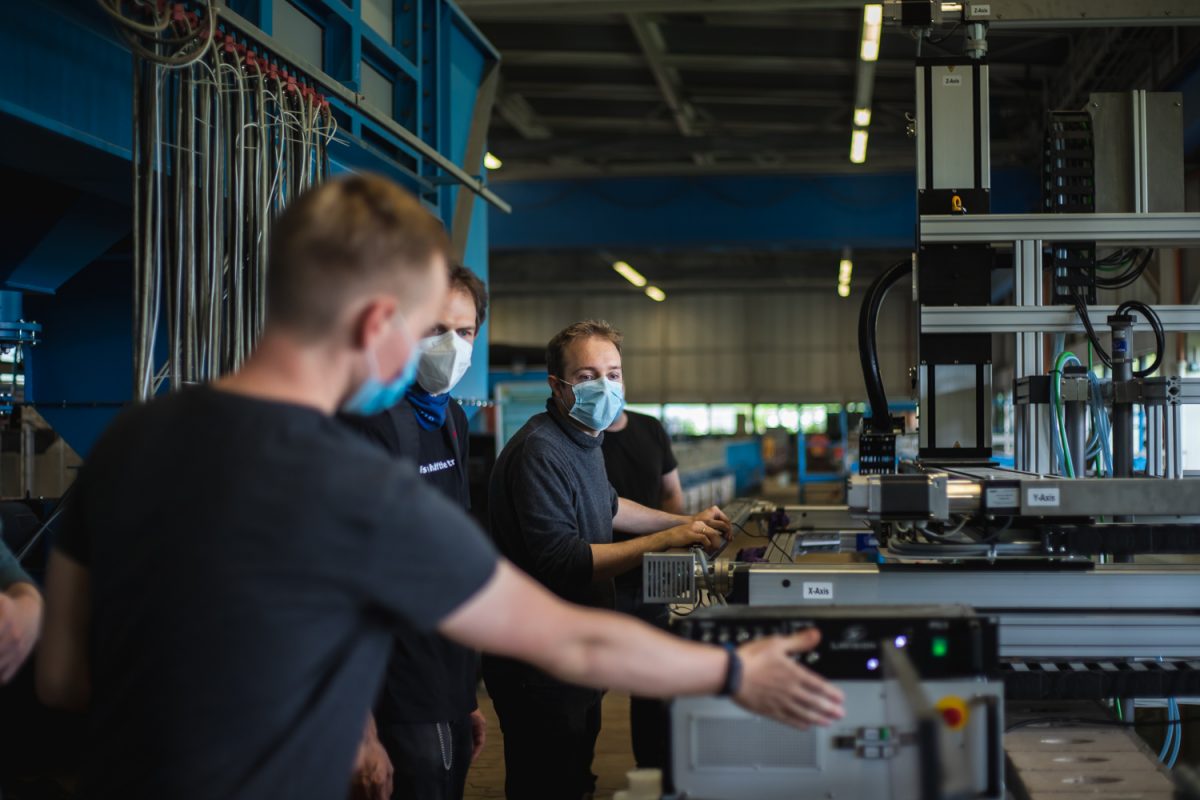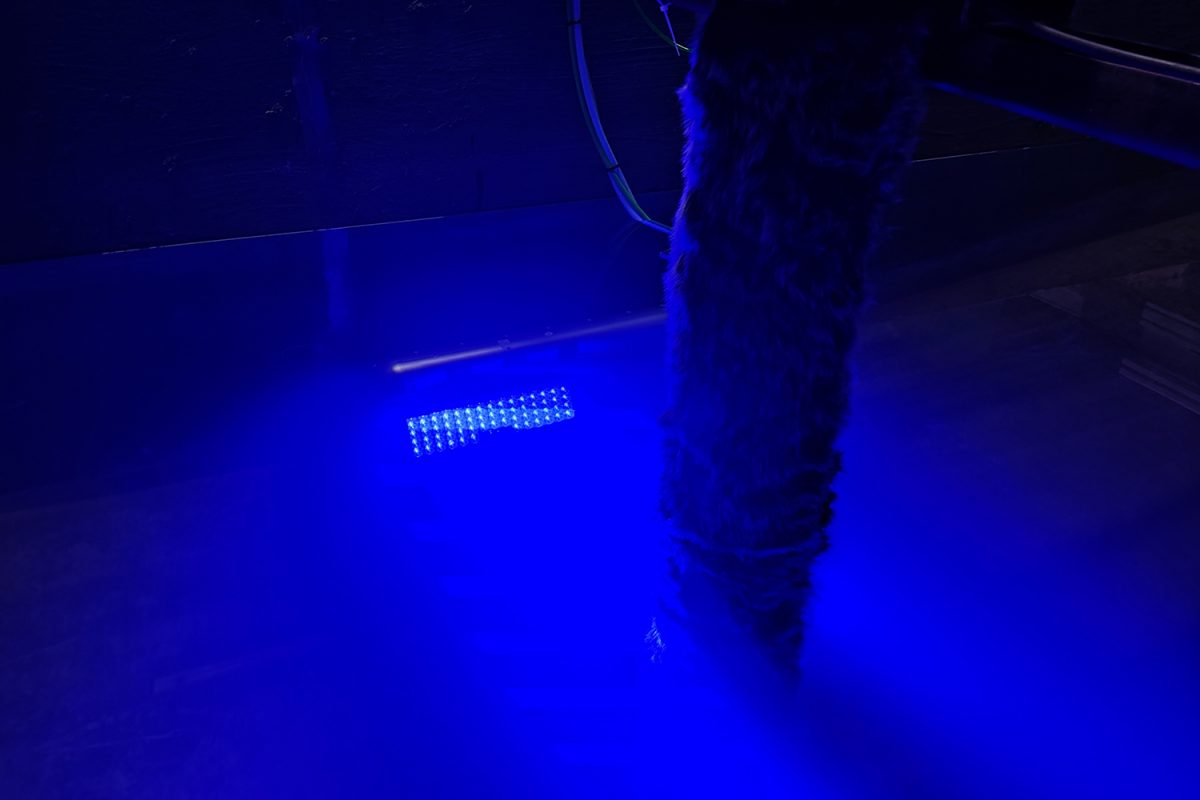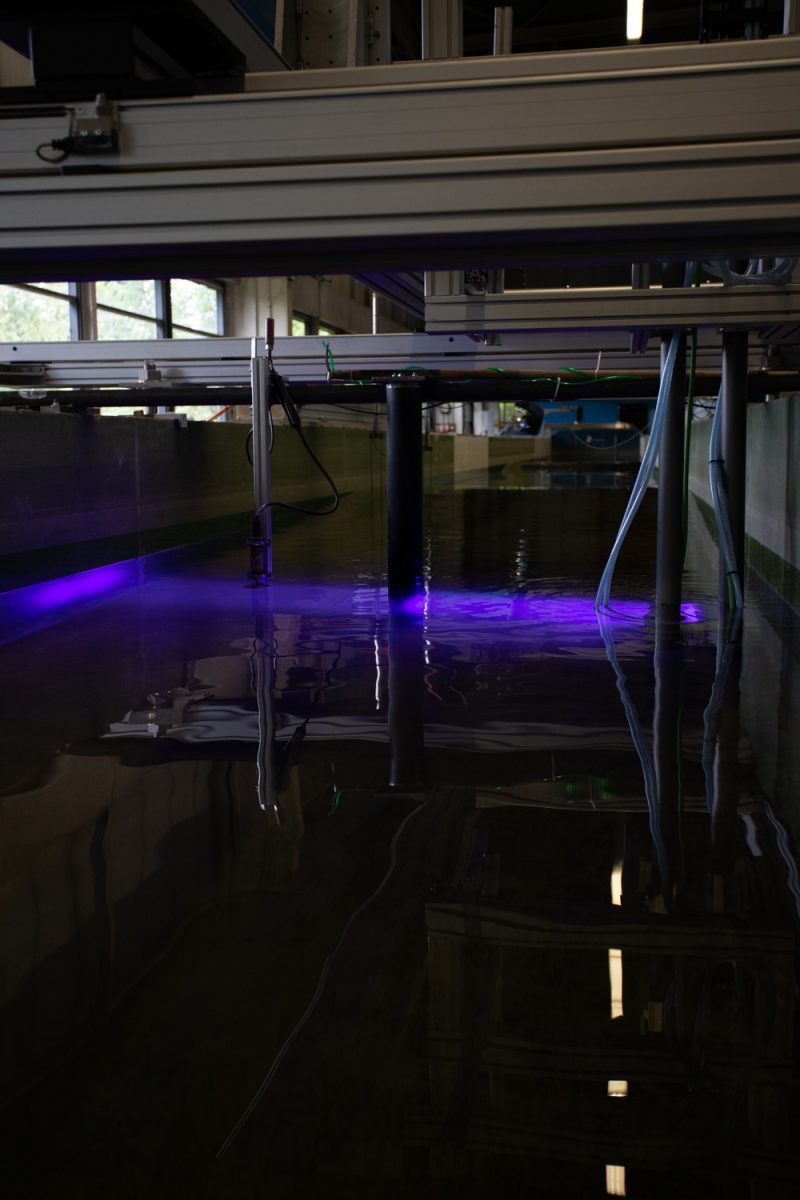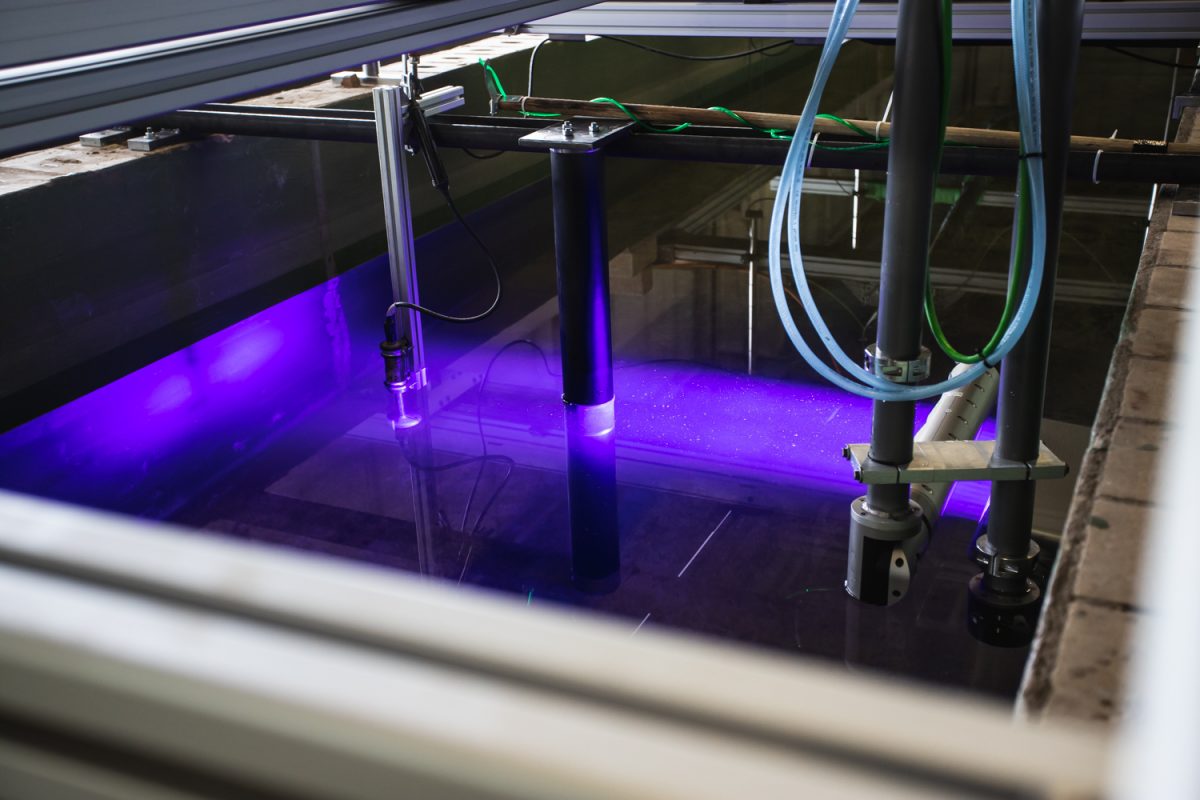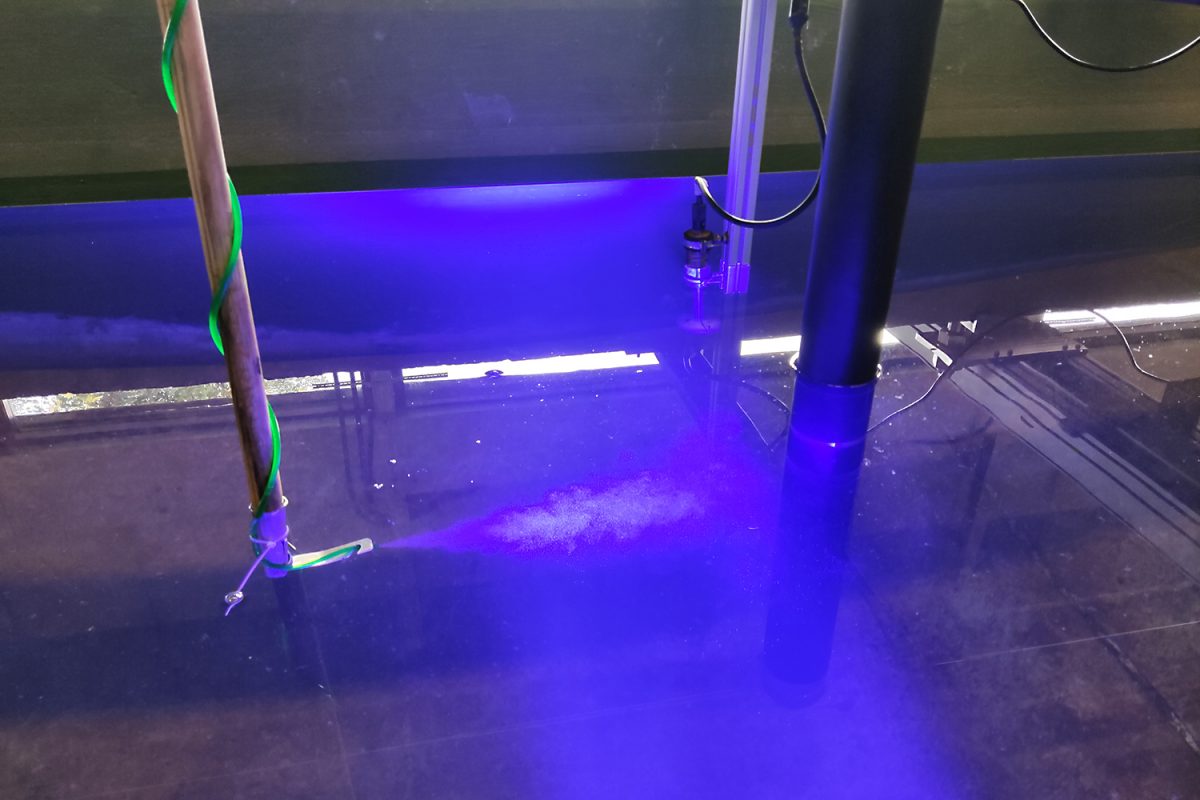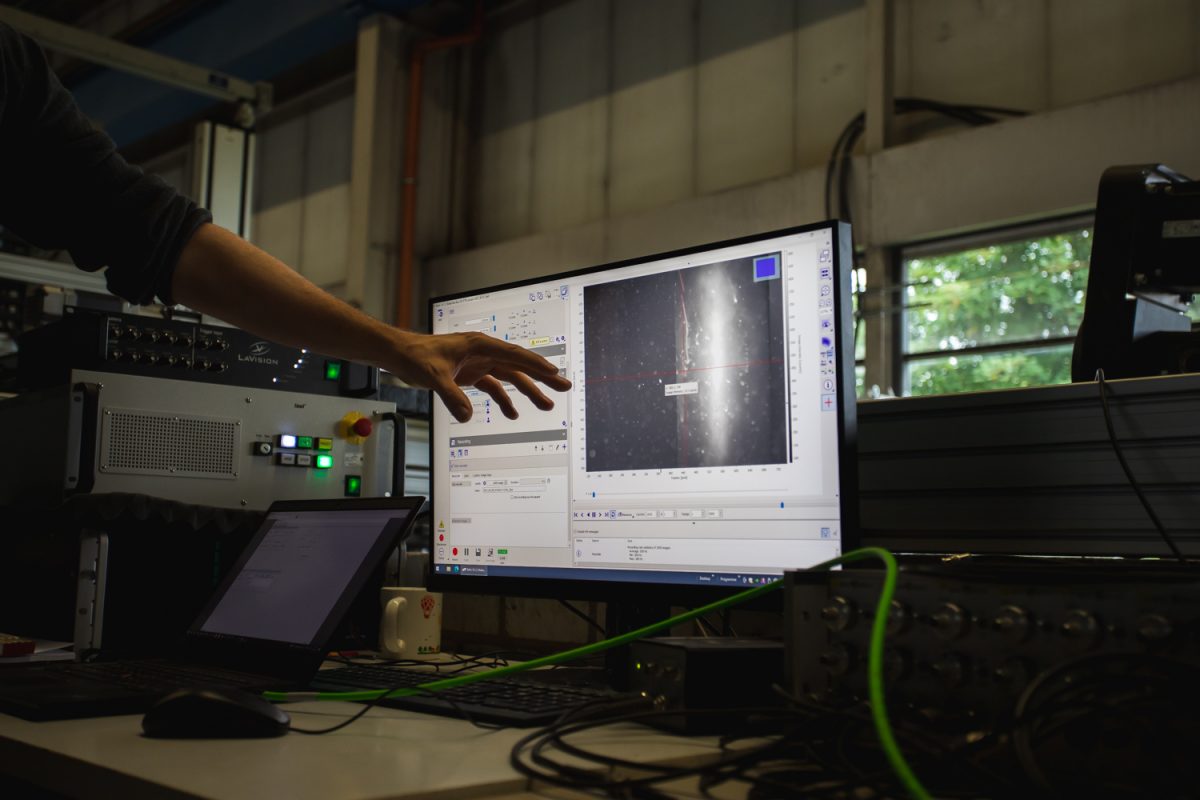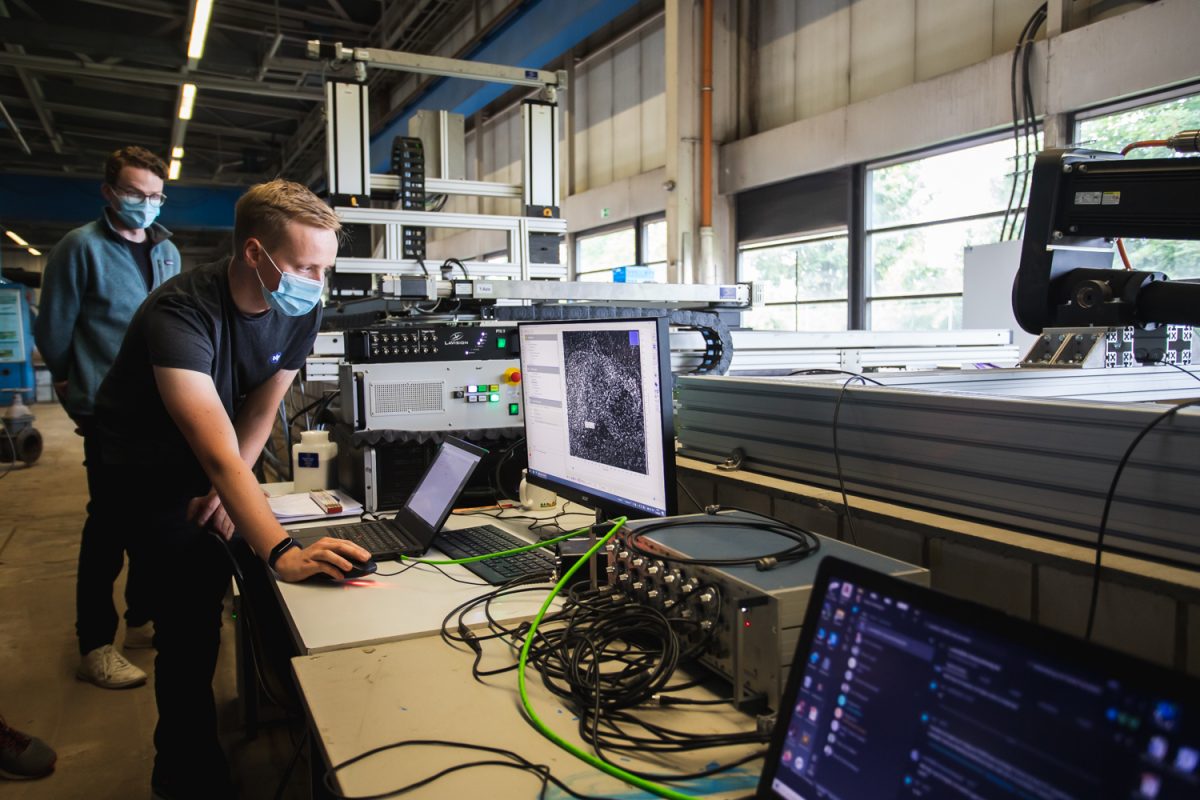Furry Piles in the Wave Flume New measuring device at the LWI for wave experiments in the "EnviSim4Mare" project
Waves, wind, ocean currents – offshore wind turbines are exposed to extreme loads. In addition, mussels and algae influence the load-bearing capacity of the supporting structures. Scientists at the Leichtweiß-Institute for Hydraulic Engineering and Water Resources (LWI) are investigating the effects of this growth in the “EnviSim4Mare” research project. For this purpose, the researchers are now using a new measuring device to measure the flow around structures.

The so-called Shake-The-Box 4D-PTV system was set up on a wave flume in the LWI’s laboratoy. Picture credits: Max Fuhrmann/TU Braunschweig
The so-called Shake-The-Box 4D-PTV system was set up on a wave flume in the LWI’s laboratory. The construction, to which a camera arm, four cameras and LEDs are attached, weighs around 800 kilograms. The high-tech device costs around 300,000 euros. What looks less spectacular on the outside turns out to be a highly complex system. In the first few weeks, Mario Welzel and Clemens Krautwald were mainly busy getting to know the measuring device. “We therefore scheduled a little more time before the first tests,” says Mario Welzel, a research assistant in the “EnviSim4Mare” project. “For the measurements, we have to configure numerous settings on the 4D-PTV system.”
Piles with “Fur”
But not only that: the wave flume and the piles around which the flow dynamics are measured must also be prepared. The scientists want to test 18 different waves – per pile. They have prepared a total of eight piles. Some are simply painted black, others are covered with sandpaper in different grain sizes, and some have been given a “fur”. The project team used carpet in several lengths for this purpose. The piles – from smooth to fluffy – simulate the foundation structures of offshore wind turbines and a variety of marine growth. Slowly, the first wave rolls towards the black-painted pile. A broad violet stripe of the meter’s LEDs shines above the wave flume.
What is really happening can be seen on the computer monitor. Mario Welzel and Clemens Krautwald gaze intently at the screen as the wave flows around the pile. Tiny particles floating in the water become visible, following either the uniform orbital motion of the wave or the turbulence caused by the pile’s surface. The two scientists have distributed thousands of plastic beads in the measuring area around the pile for investigating the velocity fields in the waves and around the structures. “With the 4D current field measurement, we can measure the current without influencing it as with other methods,” says Mario Welzel. Using only optical means, the researchers observe and analyse the processes from a distance. They vary the waves again and again and insert the different piles in the flume.
Experiments in the new saltwater wave current flume
Force effects, vortex shedding and flow patterns are the focus. The varying roughness of the pile will also change the forces on the structure. This means that the possible growth of mussels and algae must already be considered in the planning and construction of a wind turbine. “We need a better understanding of the underlying processes here. Because the less we know about the processes and influences, the more safety factors have to be built in,” Welzel explains. “In addition to the piles of the huge permanently anchored wind turbines, cables or pipelines are also affected by mussel growth,” adds Clemens Krautwald: “These basic experiments of different piles are intended to improve the process understanding, which is required in several research topics.”
The scientists have planned around 400 experiments with different camera settings. When the new saltwater wave current flume is built in the laboratory next year, the measuring device will be moved by crane to continue the experiments there. The project team has already deployed test objects at various offshore locations in the North Sea around Helgoland and Nordergründe. Algae, barnacles and mussels are expected to settle here and will be studied later in the completed research facility at the LWI.
EnviSim4Mare
The “EnviSim4Mare” research project explores how the growth of mussels, algae and other small sea creatures influences the load-bearing capacity of offshore wind turbines and other maritime structures. For this purpose, a new large-scale research facility suitable for saltwater is being built at the Leichtweiß-Institute for Hydraulic Engineering and Water Resources (LWI).
“EnviSim4Mare” has been funded by the Federal Ministry for Economic Affairs and Energy (BMWi) for three years since December 1st, 2019. The Leichtweiß Institute at TU Braunschweig, Division of Hydromechanics, Coastal and Ocean Engineering, will receive around 4 million euros of the total funding in the sub-project.
In addition to the Leichtweiß-Institute, the research network includes the team of Professor Bela H. Buck from the Alfred Wegener Institute Helmholtz Centre for Polar and Marine Research (AWI) in Bremerhaven and the two companies Jörss-Blunck-Ordemann GmbH and Ocean Breeze Energy GmbH & Co. KG as well as other associated industrial partners and authorities.

